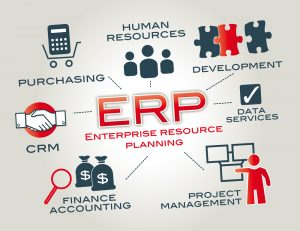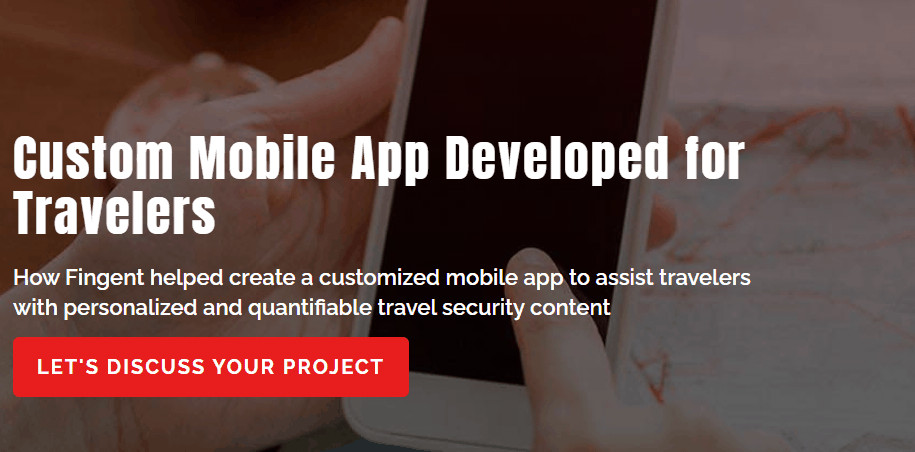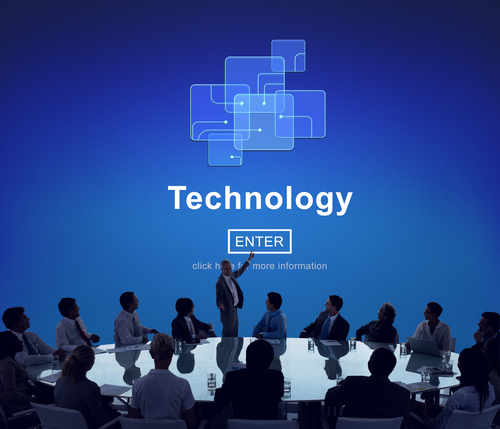Category: Digital Transformation
Over the past couple of years, digitization has enabled technology-driven small companies to outclass established business houses worldwide. With industries ranging from taxi-services to banking, transforming digitally, more and more enterprises are realizing the importance of making digitization their number one priority. The tech-savvy consumer base, which consists of the population below the age of 30 and covers 50% of the global population, is considered to be the key driver behind this realization. Such folks have the rising affinity to expect every business organization they interact with to provide the fastest and most satisfying experiences each time. As a business, turning deaf ears to customer’s expectations can lead to unrevivable consequences. From AI to blockchain, IoT and RPA, the list of digital innovation you need to pay attention to are huge.
It’s nearing the first quarter completion of 2019 and we thought this would be the perfect time to show you the digital innovations that we believe will reshape businesses in the coming months and future years. Here are our top 5 picks from technologies that enterprises need to watch out for by 2022:
Flexible Cloud Computing
When cloud computing became mainstream a couple of years ago, there was a rush from enterprises to build their technology competence on the cloud. This resulted in several businesses having their own private cloud ecosystems that supported their own limited digital innovations. Today, many available digital tools require a complex network of cloud resource. This has reshaped the cloud computing ecosystem which has now transitioned into intelligently connected networks that have Public, Private and Hybrid cloud partitions working in sync to help businesses derive value from technology running on these platforms.
Different IT workloads may need to be run simultaneously over multiple cloud platforms to achieve enterprise goals and this has resulted in the so-called Multicloud saga. This is one area which will see more developments and interest from the business community in 2019 as the previous year saw major cloud service providers acquiring or developing solutions to club their multiple cloud ecosystems to serve client interests.
Related Reading: Find how a cloud platform like INFINCE can help businesses leverage technologies more efficiently.
Blockchain in Mainstream
The past couple of years saw considerable investments from the business community in the blockchain. We believe there will be mainstream applications coming out in 2019 that will revolutionize areas such as data security, digital identity verification, and intelligent automation. Sectors such as BFSI, logistics, regulatory bodies, and government agencies have already started using blockchain to set up complex autonomous verification and validation systems that require minimal human intervention, thanks to the capacity of blockchain to be immutable.
In the coming years, more mainstream consumer-facing areas of businesses would be driven by blockchain based autonomous operational interfaces and it could set the stage for innovations akin to self-driving cars. Many technology companies would be coming out with mainstream solutions having blockchain essentials embedded into their core and these would further enhance business capabilities for enterprises worldwide.
Related Reading: Find how blockchain technology can transform the supply-chain industry.
Digital Modelling
While this concept has been around for a while, we think it will make more impact this year as more companies are investing in this front. The idea is to create a digital persona for every product or service business has to offer its customers. This persona would be used to arrive at choosing the right supporting digital enablers like data generators (sensors, IoT enabled devices, etc.) as well as the right decision path (data models and implementations of data science to arrive at success models). Such persona would be used to ascertain an offering’s readiness to the market, the cost required to maintain it viable, the processes and business models that need re-defining to support it and so on. The entire exercise though a bit complex will bring about a strategic advantage to adopters as their business offerings would be more aligned for digital success than competitors.
Related Reading: Digital innovation is transforming today’s business. Find how your business can benefit from digital transformation too.
Immersive Experiences
2019 will see consumer experiences moving to a more immersive phenomenon where almost everyone from a local retail shop to an e-commerce giant will offer interactive experiences courtesy of technology like augmented and virtual reality. Gartner says that by 2022, nearly 70% of all businesses would be using immersive customer experiences in some form on an experimental basis. Such immersive technology will find its way into numerous consumer-facing scenarios like demonstrations, virtual assistants, field services and so on. With gadgets supporting immersive experiences like smart glasses and wearables being available for very affordable prices, the consumer base requiring such experiences will grow tremendously in the coming years. The possibilities are limitless and businesses small or big can capitalize on this opportunity to improve their competence.
Related Reading: Check out the ongoing battle between AR and VR and find which technology has the potential to mainstream first.
Conversational Intelligence
Artificial intelligence is no longer a trend to watch out for because it has already gone mainstream over the last two years. Today, the focus should be on solutions that have been made available by harnessing the power of AI. One major solution that has gained attention now are conversational bots. From websites to major apps, a multitude of consumer-facing interactions is now handled by programmed bots that can interpret queries and respond intelligently.
Be it ordering food from a restaurant, booking a cab or even carry out a banking transaction, tech-savvy consumers are increasingly depending on personal digital assistants or bots to aid them in every step of the way. The proliferation of smart devices like smart home speakers, wearables and other IoT enabled home and personal electronic devices have created immense possibilities for a business to connect more effectively with end users. Today, you can ask your smart coffee maker to brew a coffee in the most precise variants of taste and smell without even having to touch the coffee maker. You can simply ask the personal assistant on your phone to do so.
Related Related: Find unconventional ways Artificial Intelligence is driving business value.
The top technologies mentioned above concludes that 2019 and the years to come is going to be a breakthrough year for several technological innovations. Business leaders need to hone their digital skills to keep pace with the rapidly growing market. On the positive side, most of these technology platforms or solutions come in affordable subscription basis and hence it is pretty much accessible to any enterprise despite their business size. However, the biggest differentiator for your success is the right technology advisory and implementation.
This is where our consultants at Fingent can become your best asset. With years of experience in empowering multiple businesses to achieve their digital aspirations, our world-class services can help you achieve your digital dreams seamlessly. Talk to us to know more about how we can help you embrace the above innovations and much more into your mainstream business operations.
Stay up to date on what's new

Featured Blogs
Stay up to date on
what's new



Talk To Our Experts
Digital Adoption is crucial for the success of an organization. Businesses understand this and are going full steam ahead in ensuring that they are completely equipped digitally. While the IT department is primarily hands-on with digital adoption, it is becoming increasingly clear that business leaders must also roll up their sleeves and get involved with the digital goals of the company. This blog will discuss why this is important and how it makes for better business leaders.
Digital Adoption
Digital adoption in the most elementary sense is to achieve a state of functioning where all the organization’s digital tools are used to their full capability. Digital Adoption also involves getting stakeholders, including customers and employees, to use these tools to the best.
If the company has a whole repertoire of digital tools, it doesn’t mean that they have successfully implemented digital adoption. It can only be a success if these tools are being used to their full capacity by the organization and its customers.
How Digital Adoption Makes You A Better Business Leader
Talking about the top executives in today’s organization, Dion Hinchcliffe, VP and principal analyst at Constellation Research says that they must “match the pace of change, fall behind, or lead the pack.” Continuing on what is expected of business leaders particularly the CIO’s today, he says: “That’s the existential issue at stake in today’s digitally-infused times, where bold action must be actively supported by out-of-the-box experimentation and pathfinding … The CIO this year must be both a supremely masterful priority juggler and an effective digital leader from the front.”
This is what today’s business scenario demands a true business leader. Leaders are expected not only to be digitally informed but to be able to lead their company into digital transformation. Digital adoption must be the focus of their efforts. Here are a few ways in which digital adoption can make you a better business leader.
Related Reading: Find how digital innovation is transforming today’s business.
1. Leading Change and Growth
One of the qualities that define a capable business leader is his ability to be a visionary and lead his organization towards growth. In today’s world, growth is becoming synonymous with the company’s ability to keep up with technology and digital transformation. Business leaders stand to benefit the most as their company moves forward and adopts the best of digital technology.
And yet, according to a KPMG study, more than 56% of digital initiatives fail due to lack of leadership. As this shows, good leadership can make all the difference between success and failure of digital adoption. The mindset of a leader and his/her dedication to digital adoption will direct the mindset of the rest of the organization. Digital disruption calls for a positive attitude towards change. It calls for a change in the culture of the organization. Encouraging innovation and experimentation is also key to the success of digital adoption. All this can only be achieved if the CEO and top-level management embrace and lead the change.
2. Gaining Customer Insight
Today’s business is more customer-centric than ever. The success of an organization is dependent on its understanding of customer preferences and behavior. In the digital age, there is no better way to gain customer insight than through digital adoption.
Jim Swanson, former CIO of Monsanto is an excellent example of leaders who leverage a company’s IT to deliver growth and value in the business. Discussing digital transformation in terms of customer centricity and the role of leaders, he says: “We talk about automating operations, about people, and about new business models. Wrapped inside those topics are data analytics, technologies, and software – all of which are enablers, not drivers. In the center of it all is leadership and culture. You could have all those things – the customer view, the products and services, data, and really cool technologies – but if leadership and culture aren’t at the heart, it fails. Understanding what digital means to your company – whether you’re a financial, agricultural, pharmaceutical, or retail institution – is essential.”
That is where the magic lies. Understanding digital and understanding what digital can do for your customer-centric goals is where you will find success. When business leaders understand this vital concept and become champions of digital adoption, then the company will see real growth.
Related Reading: Find how machine learning boosts customer experience.
3. Nurturing Curiosity
Curiosity is an important attribute of growth and change. To step out of their comfort zone and embrace growth, business leaders must cultivate and foster this important attribute. In a PWC survey of 1,322 CEOs in 77 countries, most CEOs pointed out to the importance of being curious. In order to keep up with the turbulent business scenario and stiff competition. Michael Dell, Chairman and CEO of Dell, says in the report: “The one attribute CEOs need in the future to succeed, that I would place my bet on, is curiosity. From curiosity comes learning and new ideas. In businesses that are changing very rapidly, if you’re not curious, if you’re not learning, if you don’t have new ideas, you’re going to have a real problem.”
Curiosity plays a vital role in embracing digital technology and helping employees adapt to change. Fostering a culture of innovative thinking and intellectual curiosity will help the organization move forward with digital adoption and make the best of it. Conversely, digital adoption will help business leaders build curiosity and lead their organization towards innovation and success.
Embrace Digital Adoption
The importance of embracing digital adoption cannot be overemphasized and it must start from the top. It has been estimated that there will be US$15.7 trillion in global GDP gains from AI and digital by 2030. If you want to rake in some of this revenue, there are no two ways about it – go digital or go home is the verdict! Fingent helps business leaders worldwide in their journey towards digital adoption and transformation. Let’s have a chat and see what we can do for your business.
Related Reading: Check out how AI is driving business value across industries.
Stay up to date on what's new

Featured Blogs
Stay up to date on
what's new



Talk To Our Experts
According to The Wall Street Journal, consumer spending is the primary driver of economic growth in the U.S. Manufacturers, suppliers and logistics companies are the industries that benefit from retail profits. Retailers now prefer artificial intelligence to protect profits. This improves customer service as well!
Next-Gen Solutions To Solve Retail Profit Shrinkage – Why Would You Choose AritificiaI Intelligence?
In the year 2018, the global AI market was expected to be worth 7,35 billion U.S. dollars. Also, the global AI market is expected to grow from 150 percent from 2016 numbers, reaching a forecast size of 4.8 billion U.S. dollars. These statistics show that AI is a new factor of production that can help skyrocket profitability for retailers!
Related Reading: Check out the latest trends in AI. Find 7 reasons why AI is expected to play out in 2019.
Why would you choose AI to protect retail profits?
By 2035, AI technologies will have the potential to boost productivity by 40% or even more! This means AI will increase economic growth at an average of 1.7% across 16 industries by this period.
These numbers show a straight 59% increase in retail profits alone! For this, advanced analytics are used to design and develop models. These models are then used to fetch possible outcomes from a wide spectrum of data given to a computer to analyze. From these outcomes, future decisions and actions are fed to the system which learns it. The system can now perform without human intervention! It can make decisions in real-time.
Machine learning, deep learning, and natural language processing are a few examples of AI. Marketing, pricing, logistics, risk management, store management, fraud detection are some inevitable areas where the largest retailers have used AI for decades now!!
AI – How it uses advanced analytics to solve a wide spectrum of retail problems
Manufacturers, Logistics companies, and suppliers are the major industries that support retail sales. Consumer spending depends on fluctuation in these sectors. This drives the economic growth in the U.S! Since these sectors benefit from strong retail profits, “retailers are turning to artificial intelligence to help protect profits” says a report from Forbes!
AI replaces redundant and individual-driven analysis. This is a more convenient method and ensures consistency across the retail chain. Thus AI can replace 1000 people performing the same tasks by answering spontaneously with just the same analysis!
AI can also enhance customer experience and drive sales. Online retailers use chatbots and product suggestions, while stores can enjoy real-time, targeted marketing messages. Retailers have the need to generate chunks of data on a daily basis. With predictive analytics, this data can predict trends and thus reduce the chance of failures by determining necessary changes to improve profitability. Thus the employees can have proper information faster and deliver more consistent results!
Related Reading: AI and Robotics carry the power to enhance customer experience. Here’s a CTO Guide to it.
Solving Retail Problems With AI – Steps to Overcome Challenges And Improve Efficiency To Boost Sales
All retail companies (physical and online), face four fundamental challenges. These can be solved with predictive analytics and an effective data production plan. They include:
-
Siloed and Static Customer Views
Retailers can adopt a complete, real-time strategy by combining traditional data sources with the non-traditional like social media or other external data sources to create valuable insight, resulting in robust fraud detection systems, more effective marketing campaigns, more accurate and targeted churn prediction, and better customer service. This helps them encounter the problems faced by siloed data, where transaction data are separated from web pages, which is again separate from CRM data.
-
Time Consuming Vendor and Supply Chain Management
Retailers can adopt real-time analytics and unstructured data sets to combine structured and unstructured data to create more accurate forecasts or automatic reordering, resulting in optimized pricing strategies and more efficient inventory management.
-
Analysis Based on Historical Data
Retailers can use prediction and machine learning in real time to create predictions based on current behaviors and trends. This helps them predict the client’s next move. Thus AI helps to adapt automatically to customer behaviors.
-
Single-Time Data Projects
It is high time retailers turned towards automated and scalable data workflows. This helps them improve their overall efficiency. This is made possible with predictive analytics using AI.
Related Reading: Enrich customer experience at your retail store. Read along to reveal five secret to win your retail customers.
How AI can Generate Additional Revenue
IDC analysts predict that by 2019, 40 percent of retailers will have developed a customer experience architecture supported by an AI layer! In a nutshell, the major ways in which AI can generate additional revenue and help avoid additional overheads and losses are the following:
- AI can replace redundant and individual-driven analysis for a retailer. This process is far more efficient and it ensures consistency across the retailer’s stores.
- Additionally, employee theft and paperwork errors contribute a high figure of shrink to retail profits. For instance, the National Retail Federation conducted a survey and it turned out that the reason for more than 50% of retail shrink, ie, (the difference between the real ‘on-hand’ inventory and the inventory level recorded in the computer system) is a result of employee theft and manual errors! AI models yield better and efficient results.
- Also, retailers can use AI to predict solutions benefits and functionalities prior to buying it. This way, AI can help reduce risks in retail profit shrinking.
- Choosing a consultant that can address the needs of your company can be another major benefit to reap out of AI to reduce retail profit risks. The following concerns can be addressed with the consultant:
- How to address constraints like budget, time and personnel? Ask your consultant to provide explanations for the outcomes.
- Consider the consultant’s skill sets from their previous projects and work experience before you decide to hand over the responsibilities and contract
Related Reading: Does AI have the potential to drive business value across industries? Read through to find how AI is revolutionizing various industries.
AI adopts next-generation solutions that use predictive analytics to capitalize on their data and knowing that 80% of this data is untapped and unstructured is the winning solution! Want to know more reasons why you can undoubtedly bet your company on AI?
Stay tuned to our latest articles and blogs to learn how AI has managed to perform a quantum shift in computing and in generating revenue to successful retail companies!!
Stay up to date on what's new

Featured Blogs
Stay up to date on
what's new



Talk To Our Experts
While most sectors have battled their respective digital disruption by enhancing their own digital capabilities, the real estate sector has been considerably slow to react. This is rather astonishing when you look at the size of the real estate business globally where it surpasses all other sectors to form the most valuable commodity valued at over $217 trillion. In the digital era, no industry is safe from disruptions and this includes the real estate sector as well.
How will custom software transform the real estate business?
With the overwhelming majority of today’s buyers belonging to the millennial group, the sector is witnessing an increased demand for digital innovation. From finance to aesthetics, there is a wide range of applications for technology in the real estate sector and this includes both commercial and residential assets.
What drives the need for digital in the real estate sector?
The three main driving forces behind digital adoption in the real estate sector are
- Buyer Experience
- Transparency
- Compliance
The buyer experience is the ultimate selling point for any property today be it commercial or residential. From the discovery of the property to guaranteed maintenance operations after a sale, today’s buyers need seamless services on all fronts. This could be made possible through a highly connected digital ecosystem that is spread across the entire buyer journey. There is a need for bringing a mature and trustworthy operational model for real estate dealings. Custom digital software can help bridge the gap between realtors, property managers, landlords and tenants in a multitude of ways and bring about transparency and accountability in matters where large financial transactions are involved. Besides the real estate sector draws quite a big eye from the authorities and compliance standards for safety which are amongst the toughest of all sectors. With a digital backbone, it becomes easier for compliance requirements to be validated and audited by government agencies. For buyers, this provides peace of mind and a hassle-free tenure with all risk aspects sorted, at both individual and government level.
What can digital transformation do for the real estate sector?
Now that you are well aware of the need to drive digital innovations, it is time to have a look at ways in which digital transformation can reshape the real estate sector. A gamut of technology innovations exists today that can deep dive into the various nuances in the sector and create lasting experiences for buyers and tenants and transform properties into global commodities. Let us examine the top 5 ways in which the real estate sector can transform with custom software.
Discovery of properties
In the 1980s, close to 22% of home buyers relied on newspaper ads and 8% relied on their friends to discover new properties to buy. In 2017, more than 51% relied on the internet to make a property or a home purchase decision. The internet has become the hotbed for real estate marketing and if you are not out online with full guns blazing, chances are that your listed property or home may not attract any potential interest from the buyers of today. Real estate developers and sellers need to have an attractive website for their property in addition to maintaining a sizable listing on the most popular property portals amongst buyers. Doing your homework on SEO and taking steps to include feedback from powerful search analytical tools provided by search engines like Google themselves, you can improve the online presence of your property considerably.
Related Reading: A Property Management Software can be a boon for real estate managers if adopted the right one. Find the secrets of finding the right property management software here.
Changing the role of real estate agents
Most digital disruptions have focused on massively reshaping the roles of personnel involved and here too, the picture is not different. With the rise of digital portals and custom software, buyers and sellers can connect more directly without losing a hefty price in terms of commissions. But agents are not completely left out as well. They, on the other hand, have a plethora of marketing and customer service tools to offer more privileged and customized services for buyers. The transformation can, however, be a bit painful for real estate agents dealing with residential properties as they can be choked out by a large number of digital listing portals wherein sellers can directly provide information, arrange site visits and even proceed with legal documentation without the agent’s help.
Transforming site visits
By the year 2025, nearly 20 million households in the US would be owned exclusively by folks in the millennial generation. If you expect them to drop by after work or on a Sunday for a property visit, then chances are you will never hear from them after the first inquiry. In the digital age, you can use custom software to schedule and arrange for a suitable site visit time slot that is favorable for both the potential buyer and the agent. It can even facilitate pre-visit conditions such as a deposit, online application, valid document proof, etc. Going a step further, virtual and augmented reality embedded apps can provide a 360-degree walk-through of the property on the buyer’s mobile phone anytime and anywhere. With such digital innovations, the target market would not hesitate in spending an extra premium thanks to the splendid buying experience.
Related Reading: Self Showing App, an IoT application built by Fingent streamlines the complete inspection and leasing procedures of real estate firms. Find more in the case study here.
Setting the terms of leasing or buying
Gone are the days, when you needed hours of documentation to create a transparent lease or buying agreement that aligns with regional laws and complies with all relevant risk management standards. Today custom real estate software can provide digital lease or buying agreements that can be validated by local, regional or national government authorities directly without middlemen leading to significant cost reduction in the entire process. A digital portal could record every transaction from the first site visit pre-requisites to valid document audits, payment information, terms and conditions of the agreement including periodic rental revision agreements, automated payment schedules, etc. Such a massive transformation can bring about significant changes to both residential and commercial real estate properties.
Preventing fraudulent transactions
Having a digital backbone brings with it guaranteed transparency and accountability for every transaction or commitment made between a buyer and a seller. Besides, digital portals having direct validation credentials with government authorities can provide digital verification of documents, identity proofs and other associated legal requirements for every transaction. This can aid in transparent pricing schemes, elimination of bribes and middlemen fees, provide streamlined tax revenue to governments for every deal in the real estate sector thereby eliminating fraudulent transactions.
Related Reading: Read through the case study to know how Fingent developed a customized all-in-one property management solution for one of their leading real estate client here.
Summing up
Though much of the transformation mentioned above is in various initial stages, the real estate sector holds immense potential for future digital innovation. Custom software for the real estate sector can challenge traditional buyer-seller relationships and even wipe out middlemen in the long run as we mentioned in one of the possibilities above. However, staying ahead and relevant at the same time in the digital era is what key players in the sector need to focus their attention on. Write to us to know how our digital transformation specialists can enable the best of real estate innovations for you.
Stay up to date on what's new

Featured Blogs
Stay up to date on
what's new



Talk To Our Experts
If you’ve ever tried decorating your home using the IKEA app, or used a Snapchat filter, or even played Pokemon Go, then Augmented Reality (AR) has already invaded your life. Although AR remains a revolution yet to happen, it is evolving rapidly to transform the way we work, learn, play and connect.
Tim Cook quotes –
“AR will happen, it will happen in a big way, and we will wonder when it does, how we ever lived without it. Like we wonder how we live without our phone today.”
So what exactly is Augmented Reality?
The word itself answers the question!
“Augmented”, originated from the word “augment”, means to add or enhance something. With the power of narrowing spaces between Reality and Virtual Reality, AR enhances physical objects with digital information to create an interactive experience of the real-world environment.
Google defines Augmented Reality as – “a technology that superimposes a computer-generated image on a user’s view of the real world, thus providing a composite view.”
How Augmented Reality Is Creating An Impact in the Travel Industry
With the power of gripping human minds, AR is changing the game for marketers. Technology is opening magical doors for industries to enrich their customer experience. According to a Statista report, the Augmented Reality market is estimated to grow from 5.91 billion to more than 198 billion U.S. Dollars by 2025.

However, the travel and tourism sector has already shown remarkable transitions with Augmented Reality.
How is the travel industry leveraging the wonders of AR and what lies for them in the future – are a few questions answered in this blog?
Importance of Augmented Reality in the Travel Industry
Before we dig into the innovative uses of AR in the industry, let’s take a look at how the technology is turning important to the sector.
Unlike other industries, travel and tourism is a highly researched sector. A customer never plans his travel, stay, or food places to visit, without thorough research. The quest for information does not stop for a customer even after he/she arrives at their destination. Moreover, all this information is searched on various mobile devices. A survey by Opera Mediaworks reveals that around 66% of travelers prefer using smartphones for travel research and booking.
Here is where Augmented Reality jumps in to make a change!
AR capacitates the ability to enhance search experiences by providing enticing and interactive information. With innovative mobile apps, these augmented experiences can be extended to travelers, easing their travel search and building up trust. Experts predict that embracing the power of AR can prove to become a boon for the travel and tourism industry.
How Is Augmented Reality Reshaping The Tourism Industry?
Augmented Reality is turning to be the traveler’s new ally! Layering digital information over existing reality, AR is easing the planning journey and boosting travel experiences for tourists. Although the industry has not completely leveraged the technology, yet a few pioneering mobile apps are creating indelible travel experiences.
1. Apple Map – “Flyover” Mode
Apple maps with its flyover option are enabling iOS 11 users to explore cities in the 3D view. Navigating with this feature is a lot like watching a 360-degree video where one can change the point of view by walking around. The flyover mode integrates augmented reality with Apple Maps to enable users to take a walk through the city while at home.
2. App in the Air – ARvis
App in the Air, a travel planning app, is easing the quest of finding flights for its users. The app allows users to view a plane seat at its true scale, enabling them to make better booking decisions on the basis of comfort. With an augmented view of the inside of a flight, travelers can directly compare their carry-on luggage to the airlines permitted baggage size.
3. Wikitude
Voted by the Augmented Planet Magazine as the best-augmented reality browser of 2010, this app enables users to locate restaurants, stores, and other places nearby. Using location-based augmented reality, Wikitude recognizes interesting places around for travelers to visit. The only thing they ought to do is point the app to the desired direction.
Why Is Augmented Reality The Future Of Travel Industry?
Tourism is all about creating unique experiences, and augmented reality has the potential to support tourism with innovative modes of customer servicing. It is believed that in the coming year’s AR will disrupt the business models of the sector. Here is a list of how augmented reality is providing long-term values for both customers and the tourism industry alike.
1. Innovating Advertising and Marketing
It is not surprising that mobile devices play a vital role in booking travel services. According to Expedia, 78% of travelers reveal that the informative content from destinations or travel brands influence their decision-making process and 46% reveal that ads with informative content are influential. Clearly, there’s an appetite for mobile advertising with compelling content.
Augmented reality holds the potential of enabling tourist companies to narrate their services more creatively. Providing virtual tours of hotel suites and other amenities with a single tap on mobile screens, not only eases the research process for travelers but also helps them make better booking decisions.
AR ad formats, also build a customer’s trust towards the service and increase the probability of turning one-time guests into long-term customers. AR empowers travel brands to inspire customers with interactive information and engaging experience.
2. Enhancing Travel Convenience with AR Apps
Travels can turn hectic with a lack of proper and timely information. With AR, travel brands are extending mobile apps for tourists, to enhance their travel experience and convenience.
AR Travel Apps to Ensure No Tourist Is Lost: Finding your way in an unfamiliar town is challenging. AR turns navigation apps cooler with added digital elements like arrows and other valid information. By integrating phone cameras with Google Maps, AR can enhance a traveler’s experience of exploring a new town.
AR Cutting Down Language Barriers: It is pretty much unthinkable to travel to a foreign land without a translator. But with augmented reality, smartphone cameras can translate foreign languages for users.
AR Extending 24/7 Tour Guide: Finding a perfect store or restaurant is getting simpler than ever before. With Augmented Reality, smartphones are turning into tiny encyclopedias. Screening through hotel reviews or locating historic buildings has become more seamless and interactive with AR travel apps.
[Source : Florence Travel Guide – Italy – Augmented Reality]
3. Creating Attractive Destinations
Teleporting seems possible with augmented reality. Enabling to view the evolution of landmarks in time perspective, enjoy 3D models of places, and experience travel through time, AR is allowing theme parks and zoos to create extraordinary attractions. One of the greatest examples would be the L.I.V.E. Centre theme park, which leverages AR/VR to combine art, culture, architecture, design, and retail with projections, surround sound, and special effects.
Thus to summarize, augmented reality promises to strengthen the four components of travel and tourism – transport, accommodation, catering, and tourist attraction. Accounting for the innovations of AR in the industry, experts predict travel and tourism to be the first industry to revolutionize soon with augmented reality.
Related Reading: Find how Augmented Reality can be the future of communication and security.
To unfold the hidden opportunities for your business with emerging technologies like AR/VR, contact the tech experts at Fingent today!
Augmented Reality is already enhancing travel experiences with innovative mobile apps. Is this the beginning of a revolution or is it the only transformation augmented reality can bring into the industry?
Augmented Reality is already enhancing travel experiences with innovative mobile apps. Is this the beginning of a revolution or is it the only transformation augmented reality can bring into the industry?
Stay up to date on what's new

Featured Blogs
Stay up to date on
what's new



Talk To Our Experts
Most of us, technology geeks or not, are eager to stay first in line to catch up with the latest game-changing technology trends. Here we are to know which technologies will thrive in 2019!
The Potential Technology Trends You Need To Explore In 2025
Have you ever looked up at the sky and clapped your eyelids on a bat? This is commonplace. But what if it was a drone. Or would it be a flying fleet? Since we don’t belong to the Jetsons family, the latter is not expected but we are close to it! 2019 is definitely a transformative year for technological innovation!
According to Gartner, the Top 10 Strategic Technology Trends for 2019 are Block chain, Artificial Intelligence, Empowered Edge, Privacy and Digital Ethics, Quantum Computing, Immersive Experiences, Augmented Analytics, Autonomous Things, and Digital Twins!
This is just the tip of the iceberg. Following are the emerging technology trends and catalyzing technical innovation that we can expect to see more of in 2019!!
Related Reading: Find how digital innovation is transforming today’s business world.
1. Blockchain Technology – The ‘New Internet’
Some call Blockchain technology the ‘New Internet’. The blockchain is the brainchild of a person or group of people known by the pseudonym, Satoshi Nakamoto. It permits digital information to be distributed but not duplicated.
It was first devised for the digital currency, Bitcoin. It is also called the “digital gold”. To this day, the total value of the currency is nearly $112 billion US!
“Blockchain solves the manipulation problem”, says Vitalik Buterin, inventor of Ethereum.
2. Artificial Intelligence (AI)
Apart from AI-powered chatbots, 2019 will witness chip manufacturers such as Intel, NVIDIA, AMD, ARM, and Qualcomm shipping specialized chips that speed up the execution of AI-enabled applications.
2019 will also be the year for hyperscale infrastructure companies like Amazon, Microsoft, Google, and Facebook.
Related Reading: Check out the top AI trends of 2019.
3. Cloud-independent edge computing
The study from IDC illustrates that 45 percent of the entire data created by IoT devices will be stored, processed, analyzed and acted upon close to or at the edge of a network by 2020! Edge computing is a mesh network of data centers that process and store data locally before being sent to a centralized storage center or cloud.
4. Privacy and Digital Ethics
Facebook, recently witnessed the biggest security breach in which 50 million accounts were compromised. Facebook, later clarified that data of 30 million accounts were stolen.
People are becoming more nervous about how organizations and third-parties are using their personal data.
5. Quantum Computing
The world is behind building the first fully-functional quantum computer. Also called the supercomputer, this is expected to be a cloud service rather than an on-prem service. IBM is already offering cloud-based quantum computing services. For instance, the automotive, financial, insurance, pharmaceuticals, military, and research industries have the most to gain from the advancements in Quantum Computing.
6. Immersive Experiences
Conversational platforms are changing the way in which people communicate with the digital world. Virtual reality (VR), augmented reality (AR) and mixed reality (MR) are changing their approaches to know more about people’s perception.
7. Augmented Analytics
Augmented analytics relies on augmented intelligence. This uses machine learning (ML) to transform how analytics content can be developed, consumed and shared.
“Through 2020, the number of data scientists will grow five times faster than the number of experts”, says David Cearley!
8. Autonomous Things
Autonomous things, such as robots, drones, and autonomous fleet, use Artificial Intelligence techniques to automate their functions that were previously performed by humans.
9. Digital Twins
A digital twin is a digital representation of real-world items that are interlinked. Cearley states that there can be digital twins of people, processes, and things!
A DTO is an aspect of the Digital Twin evolution that is a dynamic software model that relies on operational or other data. DTOs help drive efficiencies in business processes.
Apart from these, there are other key technology trends that organizations need to explore in 2019. These include:
10. Cybersecurity and Risk Management
According to the estimates from the firm Gemalto, the data breaches were 4.5 billion in the first half of 2018! The University of Maryland study found that hackers attack computers every 39 seconds.
In 2019 we will be facing a more sophisticated array of physical security and cybersecurity challenges.
Cybersecurity is thus the digital glue that has held IoT, Smart Cities, and the world of converged machines, sensors, applications, and algorithms operational throughout!
11. Smart Spaces
A smart space is a physical or digital environment in which humans and technology-enabled systems interact in an increasingly open, connected, coordinated and intelligent ecosystems, according to Gartner! The world of technology is to enter accelerated delivery of smart spaces in 2019.
12. Self-powered data centers
Data centers grow every minute with the implementation of virtual servers and storage, energy-efficient buildings. In 2019, the data centers are expected to run on its own self-contained power plants!
13. IoT integration
2019 will witness more IoT implementation. An International Forrester IT survey that said among a recent group study, 82% of respondents were unable to identify all of the devices connected to their networks. Of this lot, 54% were nervous about device security, and 55% were concerned about integration!
Related Reading: Find the role of Data Analytics in Internet of Things (IoT)
14. More self-service IT kiosks for business users
2019 will be a year of IT innovation designed to build better communication between IT and end users. The self-service IT kiosks to be set up would enable users to log on and choose what they want for the apps that they build.
15. The Internet of Things and Smart Cities
50 billion equipment, including smartphones, and others are expected by the IoT to be wirelessly connected via a network of sensors to the internet by 2020!
The term “Smart City” means creating a public/private infrastructure to conduct activities that protect and secure citizens. It integrates communications (5-G), transportation, energy, water resources, waste collections, smart-building technologies, and security technologies and services!
To upgrade your business with the latest technology trends on the table, contact the experts at Fingent today! Also, read through our latest blogs to learn more about accelerated technological development!!
Stay up to date on what's new

Featured Blogs
Stay up to date on
what's new



Talk To Our Experts
The Experts Speak: The Adoption of AI and ML in Software Development
Artificial Intelligence (AI) and Machine Learning (ML) is transforming nearly every industry. In our previous blogs, we discussed how it is transforming finance, customer service, supply chain & logistics, and other industries. In this blog, we will talk about how AI and ML are radicalizing the software industry. We will look at the benefits of the adoption of AI and ML in software development and what industry experts have to say about it.
The Fundamental Shift in Software Development
At its very core, software development involves writing reams of rule-based code. Traditionally, developers had to specify every detail to let the system know what to do, and then customize the features of each piece of technology. With the adoption of Artificial Intelligence and Machine Learning, this process becomes much easier.
Author, scientist and Google research engineer Pete Warden puts it well:
“The pattern is that there’s an existing software project doing data processing using explicit programming logic, and the team charged with maintaining it find they can replace it with a deep-learning-based solution … What I see is that almost any data processing system with non-trivial logic can be improved significantly by applying modern machine learning. This might sound less than dramatic when put in those terms, but it’s a radical change in how we build software. Instead of writing and maintaining intricate, layered tangles of logic, the developer has to become a teacher, a curator of training data and an analyst of results.”
Practically, this means a revolutionary change in the very essence of software development.
AI and ML in action
“Modern IT environments are incredibly (and increasingly) complex and ever-changing, leading to large amounts of time and resources devoted to monitoring, troubleshooting, and course correcting,” says Phil Tee, Cofounder, and CEO of Moogsoft Inc. “It’s a reactive position for most companies, but when teams use AIOps technology they can leverage change-tolerant algorithms and access indexed information. This allows them to spend more time focused on proactive, meaningful work rather than fixing the same problems repeatedly or spending time managing rules and filters.”
Artificial Intelligence and Machine Learning can transform the entire Software Development Life Cycle (SDLC). Three ways in which it does this are:
- Synthesis of large volumes of data to predict the success or failure and business value of a project.
- Predicts accurate project delivery timelines, delivers project status updates and creates project schedules.
- Automatic diagnosis and rectification of problems in the project.
Let us consider the details of how this is achieved.
1. Turn Idea into Code Quickly and Effectively
The process from the inception of an idea to its actual execution into workable code is time-consuming and complex. Traditionally, developers must go through a long process of trial and error to get the basic code in place. Obtaining funding approvals for the project is complicated as well and requires getting the project to a prototype level even before requesting for funds. All this can be made easy with AI and ML. In the future, the system itself could learn to process ideas from natural language and suggest machine-executable code without human intervention. AI and ML are making this possible even now by teaching systems to suggest code completion. This way systems will slowly learn to generate code through predefined modules.
Considering the viability of a project also becomes easier and faster with AI and ML. Machine learning can help developers identify and prioritize the effects of the project based on business risk. This way, time and effort on unnecessary regression testing and rectification can be eliminated. A sound decision on whether the project is feasible or not can thus be made in the earlier stages.
Related Reading: How to accelerate your business growth with Robotic Process Automation
2. Effective Project Management
Through pattern detection, AI and ML can be trained to use details of past projects to provide accurate estimates of the current project. Historical project details like bugs, test phases, actuals, and estimated values can be fed into the system and used to fine-tune the level of accuracy. Through this, the system will learn to predict accurate delivery schedules and create work schedules for individual members of the team. Risk Management, as well as Resource Management, can be better executed this way.
3. Automation of Testing and Error Detection
Pattern Detection is one of the most valued benefits of machine learning. This can be used effectively to automate the testing and debugging process in software development. One of the challenges of software testing is to come up with a list of most likely cases and scenarios that could affect the program’s performance. Through pattern detection, systems can look at past logs and generate a test case list automatically. They can also identify and classify error types and in time learn to automatically fix these errors.
Joe Colantonio, an expert on software automation and performance testing discusses what is possible with AI and ML. “Wouldn’t it be great if you could answer the classic testing question, “If I’ve made a change in this piece of code, what’s the minimum number of tests I should be able to run in order to figure out whether or not this change is good or bad?” he says. “Many companies are using AI tools that do just that. Using ML, they can tell you with precision what the smallest number of tests is to test the piece of changed code. The tools can also analyze your current test coverage and flag areas that have little coverage, or point out areas in your application that are at risk.”
Revolutionizing IT
Apart from making a big difference in the software development process, Artificial Intelligence and Machine Learning will also change the way applications are made. With the power of AI and ML, developers will be able to design apps, which will be able to listen, think, speak, reason and make decisions. Vision Recognition technologies, Optical character recognition, and many more AI-powered capabilities will help developers create faster, smarter and better apps in the future. At Fingent, we endeavor to put this into action every day. There is no area that is immune to the changes that AI and ML can bring and we are determined to stay on top of it.
Related Reading: Top Artificial Intelligence Trends to Watch Out for In 2019
Stay up to date on what's new

Featured Blogs
Stay up to date on
what's new



Talk To Our Experts
Also known as Intelligent Automation, Robotic Process Automation leads to business success with the robots being able to perform complex tasks. Recent researches have shown that robotic process automation can help in successfully carrying out 87.5 percent of the tasks on time on its own!
According to Forrester Research, 2018, “CIOs should use robotic process automation to digitize and optimize operations, to create and act upon advanced insights, and to drive business technology innovation.”
Institute for Robotic Process Automation and Artificial Intelligence, define RPA as an application of technology that aims to automate repetitive business processes. RPA tools help a company to configure software—a “robot,” so to speak—in order to capture and interpret applications for processing transactions, manipulating data, triggering responses, and communicating with other digital systems.
Everything you need to know about using Robotic Process Automation For Your Business Growth: Tips and Tricks!
Over the next three decades, statistics show that over 76 million baby boomers, rather freshers will retire and only 46 million new workers will be available to replace them! During this time, the demand for labor will rise, making robotic automation a real and viable solution! But this does not indicate that Robotic Process Automation means career extinction!!
Robotic Process Automation – Important Insights and Forecasts!
North America bagged the highest in 2017 for using RPA and the trend is expected to continue over the forecast period. The reason is the increased penetration of automation and process management solutions across the region. The fastest-growing region is expected to be the Asia Pacific. It was valued at USD 45.9 Million in 2017. Automation, which includes machine learning, robots, and AI are the strong sectors for market growth in the Asia Pacific region.
Let’s walk through the major ways in which Robotic Process Automation drives business growth:
Cost Savings By Making Work Robo-Automated!
Implementing Robotic Automation in your business enables 24/7/365 operational functionality at the cost fraction of an individual! Through work process automation, administrative costs are reduced immediately and no additional back-office resources are required. Implementing RPA requires an initial financial investment, but it increases the overall efficiency and productivity. It ensures the reduction of errors as well.
Advanced Analytics Prove Business Process Optimization
Data is King! Recent studies have shown that the use of automation ensures 100% compliance of data-driven regulatory standards (HIPPA, PCI, etc.). Integrating technology within any enterprise infrastructure function enhances the ability to predict future results and optimize business processes.
Through the use of Robotic Process Automation, operational processes can be assessed based on the performance data of your business. By creating a constant data-driven feedback loop, higher levels of efficiency can be measured. This cannot be achieved with human operation.
Improved Performance, Efficiency, Quality and Reliability
Robotic tasks and workflows are efficient and ensure 100% accuracy and availability. Automation eliminates repetitive functions.
RPA helps employees to apply their skills and experience toward core business objectives. This is made possible with automation as repetitive mundane tasks can that drive innovation and growth.
Protection from Injurious Tasks
Also termed Musculoskeletal Disorders (MSDs), Repetitive Strain Injury occurs from performing the repetitive tasks at high speeds. This results in swelling and cramping. When performed continuously at high intensity for a longer duration, it results in a chronic disorder!
According to the statistics, in 2012, the manufacturing industry had the fourth highest number of MSDs, with 37.4 incidents per 10,000 workers. In such cases, robots are the best suited for completing repetitive tasks, thus saving employees from dangerous work disorders!
Automation Workflow Independence With RPA Integration: Correct Those Brittle Workflows
What can be more charming than the freedom to integrate with any available technology? A prime advantage of RPA integration is it does not require Information Technology (IT) resources.
When funding for large IT projects is a bottleneck for corporations because of its need for programmatic integration with enterprise-wide systems and applications, it forms a major IT development barrier.
For instance, consider the success of Software as a Service (SAAS) solutions such as Salesforce, Zendesk, GoToMeeting, Slack, Workday and so on. These have witnessed tremendous success by their ability to be deployed with very limited technology backbone. Similarly, Robotic Process Automation bypasses the IT sector through its “View Layer” integration approach. The centralized engine it has is trained to communicate and operate with existing applications at the desktop level and not the back office. Thus robotic process automation rules and workflows can be defined by anyone!!
Surface Automation and Document Processing With RPA: Need to Handle Brittle Workflows
RPA is useful when you need to automate the process of adding data to or manipulating data within one of those systems. This is called Surface Automation. RPA provides an effective solution for accessing and working with data housed in those systems.
Additionally, RPA tools are used by businesses for Document Processing. These RPA tools can open a file, parse its contents, and move files.
The concern is since RPA engages with systems on a surface level, the workflows built with RPA are brittle. For instance, If a document’s format changes, the RPA process must change accordingly. So now there is a need to streamline these brittle workflows.
The Future Is Now With Robotic Process Automation!!
The Robotic Process Automation (RPA) market size was valued at USD 357.5 Million in 2017 globally. This value is expected to reach a CAGR of 31.1% over the forecast period.
The ever-mounting demand for Business Process Automation (BPA) through the use of Artificial Intelligence (AI) and software robots are featured to be the key growth-driving factor for the market.
Integrating RPA in the core business enables a business to streamline IT and business operations.
Also, its ability to mimic the numerous skills of humans, without human intervention while consistently carrying out prescribed functions and scaling up or down to meet the demand is expected to augment the market demand!!
Robotic Process Automation will play a significant role in the automation of Customer Experience and be a key factor in your business in the near future! Consult our experts at Fingent to know how Robotic Process Automation can bring incredible changes to your business.
Related Reading: CTOs Guide – How Robotics and AI Can Improve Customer Experience
Stay up to date on what's new

Featured Blogs
Stay up to date on
what's new



Talk To Our Experts
In this era of rapid digital transformation, new technologies have opened up opportunities and created challenges, fundamentally transforming customer experiences, operating models and the work environment.
While the scope, scale, and complexity of business technology has evolved at an exponential rate, sophisticated technology has also become more accessible to a wider audience. Such accessibility enables a thriving digital culture which can be a source of competitive advantages across all business functions – recruiting, training, sales, sourcing, manufacturing, logistics, marketing and more. While in the past, technology providers (like us at Fingent) predominantly worked with IT departments, today we often work with functions like finance, sourcing, HR, project management and logistics, with minimal or no involvement of the customer’s IT team.
More importantly, access to robust technology is also no longer exclusive to large enterprises. Commoditization, outsourcing, and good connectivity have driven down costs, making technology accessible to businesses of all sizes, across the globe.
By providing an attractive basis for innovation, improving cost efficiency and differentiation, the synergy between technology and business processes is no longer optional, but a must-have.
Studies reveal that 55% of startups have already adopted a digital business strategy compared to 38% of traditional enterprises.
While the specific technologies that can be leveraged for business growth, will vary widely across organizations, there are a few common themes that business leaders can consider.
The Cloud democratizes Information Technology
Cloud computing is really the internet as we use it today. Dropbox, One Drive, Facebook, INFINCE, AirBnB, Twitter, Uber…. Are all in the cloud. It is really an umbrella term that covers a variety of on-demand computing and storage services as IaaS (Infrastructure as a Service), PaaS (Platform as a Service) or SaaS (Software as a Service).
Related Reading: Choose the right Cloud service model for your Business
Cloud technologies help discard or avoid the need for physical IT infrastructure, and on-premise support structures for computing capabilities, by virtualizing these across server farms or data centers. Using cloud-based services providers, businesses can leverage IT assets as programmable resources, which are global and scalable on demand. This allows a business to access or lease computing resources and storage power far greater than what it may have been able to access on local infrastructure, while still being able to scale up or down in a cost-efficient manner.
Consider V Locker, an Australian firm providing automated locker solutions for freight deliveries. V Locker manages lockers for B2B customers across the globe from Australia, using IaaS (Infrastructure as a Service) and PaaS (Platform as a Service).
On the cloud, multi-tenancy enables effective resource utilization, reducing costs to make the cloud a cost-efficient option for most organizations. For e.g. SaaS (Software as a Service) Property Management service Simple Rent uses multi-tenancy to provide a low-cost, high quality offering to the commercial and residential rental business.
While the Enterprise IT spend on the cloud is relatively small, it is the fastest growing segment, slowly replacing on-premise systems. At one end of the spectrum, Oracle and Microsoft are slowly shifting legacy products to the cloud, pushing many large enterprises to follow suite. At the other end, solutions like Infince have taken enterprise cloud a step ahead by blending SaaS and IaaS for small/medium sized businesses, providing a cost-efficient, secure cloud-based alternative to expensive alternatives. The cloud makes robust enterprise technology accessible globally to businesses of all sizes without the need to invest in expensive infrastructure or large teams.
Data – Big, Small and everything in between
With the relentless digitization of business and society, we have access to extraordinarily large amounts of data. Transactional data (from digitized business processes via ERP, CRM, HRMS, POS, and similar systems), Social data (Facebook, LinkedIn, YouTube, Twitter and the like) and Operational data (from connected devices and IoT systems) can be leveraged to provide better customer experiences and improve operational efficiency. The key is not just to gather data, but to leverage it with analysis and insight. From an organizational perspective, this can require experts from multiple disciplines to work together to peel back multiple layers of data and insight.
Related Reading: Find out how Big Data is changing the Healthcare sector.
Success depends not on the indiscriminate application of technology to data, but on a coherent approach, of identifying critical data that matter, and using the right technology to generate relevant and actionable insights, delivered to key stakeholders in the value chain, in real time.
In the realm of marketing, successful big data analytics manifest as tracking everything a customer or prospect does and generating real-time alerts to the marketer or a front line executive dealing with the customer. For instance, if the customer walks into a store, the automated analytic solution alerts the sales executive immediately, and everything related to the customer, including their preferences, purchase history, and more, surfaces to the executive’s tablet. Likewise, if a prospects click on an ad or downloads an app, the marketer gets an alert immediately, enabling them to engage the customer proactively, to close the deal or move the prospect up the lifecycle.
From Digitization to Digitalization to Digital Transformation
Digitization is the conversion of analog physical objects into digital goods. Paper to PDF or Doc, or physical cash digitized to mobile payments, physical signatures to electronic signatures – these are all digital manifestations of non-digital objects. Digital goods have low marginal costs, are non rival, and can easily be bundled with other digital or non-digital products. Consider online user manuals, learning management systems. Usually the first step in an organization’s technology journey, Digitization sets the foundation to enable Digitalization and Digital Transformation.
“Digitization and digitalization are two conceptual terms that are closely associated and often used interchangeably in a broad range of literature. There is analytical value in explicitly making a clear distinction between these two terms.” – Scott Brennen and Daniel Kreiss
Digitalization is about leveraging technology to create, enable or transform a business process- usually leading to one or more of- the discovery or new opportunities, reduced risks or efficiency gains. For example, field service management solutions like ReachOutSuite help deploy digital forms to field technicians across various locations. It reduces the risks of revenue loss due to errors, inefficient scheduling and underprepared staff. This service also increases efficiency by maximizing staff utilization and getting more jobs done pre-staff. It further enables the identification of new opportunities by enabling techs and backend admins to understand customer experience better. Digitalization of business processes is par for the course these days with a plethora of packaged and custom built software available for enterprise planning, managing business finances, training, projects, customer management, and human resources.
Find how ReachOutSuite can make a work order manager’s life simpler.
- CRM systems coordinate business processes that are key to generating leads, converting them into prospects, and, subsequently, into regular customers. Additionally, CRM software solutions supply business managers with data processing and analytic tools to help refine marketing strategies, improve customer service and track overall organizational performance. Through centralization of business data, CRM software tools streamline the decision-making process and automate repetitive tasks.
- Project management software eliminates laborious paperwork and tedious planning processes. With the right tools, businesses can control projects costs and improve the efficiency of related operations. Technology automates most project management processes to make it affordable and practical for any type of business. The main benefits of implementing project management software include – Easier project planning, monitoring and tracking, Improved collaboration, Better organization, and future planning
- ERP systems boost productivity and promote business growth in two primary ways. First is automating business processes to improve accuracy and save time for all employees. Second, ERP systems unify data generated by the business and make it available to decision-makers and other managerial parties throughout th
 e firm. It eliminates data sharing problems among departments and makes the information accessible to everyone.
e firm. It eliminates data sharing problems among departments and makes the information accessible to everyone.
Digital transformation is about leveraging digitization and digitalization to transform a business unit’s or an organization’s approach to business. This can involve one or more of – new business models, overhauling customer experience, radically different manner of service or product delivery. The transformation is driven by the business, and not by the IT team. For instance, consider Replika, which connects brick and mortar sales to the digital realm, transforming the way sales is managed for retail. Emerging technologies will create new business models that may be hard to understand or foresee today. For instance, digital securities based on blockchain based technologies can unbundle ownership of analog assets like property or gems, while making it possible to bundle diverse asset classes to create new portfolios for investment. Such digitization of previously illiquid assets creates new customers, new strategies and new business models that may not be possible to fully comprehend today.
Related Reading: Find out how INFINCE is the ultimate digital transformation for small business of today.
In conclusion
Technology is a disruptive force. In the current ever-changing and multifaceted business environment, technology can not only help improve your businesses’ agility but can also provide cost-effective means to innovate your products and services, improving customer experience. The key is to adopt the right tools and partners, while actively planning the change and deployment.
Stay up to date on what's new

Featured Blogs
Stay up to date on
what's new



Talk To Our Experts
Digital revolution has not just changed how businesses are perceived but also how businesses are performed. It meant a shift from the conventional means of operation to the one aided by technology. In today’s age, every aspect of a business from operations to management is run using digital tools. Such digital transformations has changed every industry and revolutionized the way of serving the customers, improve the competitiveness of the business and pushed forth its expansion into the global market.
Coleman Parkes Research in one of their surveys identifies that 82 percent of respondents have adopted digital technologies for redefining their businesses. This complete overhaul of business with the reinvention of business operations are affected by the advent of mobile, cloud, social, and big data analytics. So has the transcendence of a digital world helped grow businesses? If yes, what are the ways in which businesses can take advantage of the same?
Related Reading: Implementing a digital transformation strategy for your business requires adequate know-how of the varied process involved in the same. Know about the five crucial questions to consider before initiating your digital transformation journey here.
What are the innovative changes?
Early on, businesses built websites as a front for providing only information. With interactivity and the onset of the mobile revolution, sites and apps started to provide much more. They are used to offer services and products right at the doorstep of customers. The use of social media has enhanced the knowledge regarding what the customers like and what they seek. Businesses can use this medium to understand and tailor personalized experiences to provide real value to their customers.
Big Data analytics has changed the way businesses adapt and change. From decision making to predicting customer preferences and hiring the right skill sets, big data analytics has emerged as the game changer for businesses today by influencing how they deal their data. Instead of undertaking a market study, there is relevant data that tells what is working in the market and what is not.
The competitiveness
Each business that enters into a digital transformation is out there to compete every second. Imagine the new generation of customers who have everything at the tap of a button. Businesses need to be on their toes to deliver rich, real-time interactions with an element of personalization to keep their customers engaged. Also, the need to keep updating and innovating with respect to the competition is a necessity to save the business from running into the ground.
The increased reach
Even though the competition increases with the digital transformation, businesses can take advantage of the fact that now they have reached a global audience. There is a market for the niche of products and services since customers have a way to access them easily. Also putting a step into innovation ensures that your business is at the forefront of achieving a profitable chunk out of the industry.
Improved avenues
Since transforming the business into a digital space is no longer an option, businesses should start utilizing the benefits of such a change. Pervasive digitization of services and products can be made to ensure that there are no barriers between the business and their customers. Also, traditional companies can start making efforts to revamp or add new services that are digitally available to increase their profits. Monetization from digital platforms and collaborations with partners can further help achieve better profits from an untapped source of customer relationships.
Related Reading: Take a look at the CIO’s opinions of digital transformation initiatives deployed across different businesses here.
How to make the most of this digital transformation?
In today’s day and age, no business is smaller or bigger, each of them competes in a virtual, digital space that offers fair ground for competition. Businesses should start looking at Big Data analytics and use the social media space to push their content to the customers. The idea is to be always supple, no matter how big or small your business is. Think like a startup at every step to understand the new technologies, the revolutionary changes, and be flexible to adopt them quickly. Having a digital core at the heart of your organization to manage and operate the business is the right way to go ahead in this modern digital era.
If your business is seeking to get into the race of digital transformation, it is important to act right now. Late adopters can have serious disadvantages since the competition is already in the domain. If you are looking to adopt a business model that utilizes a digital core, we can help. Embrace the digital transformation with the best developers to get to the forefront of change.
Stay up to date on what's new

Featured Blogs
Stay up to date on
what's new




















